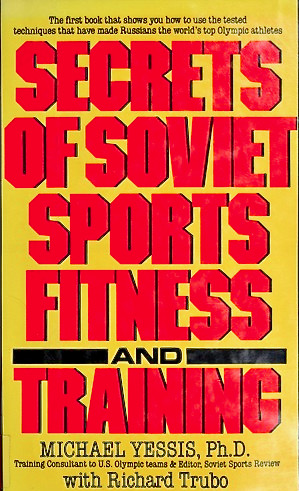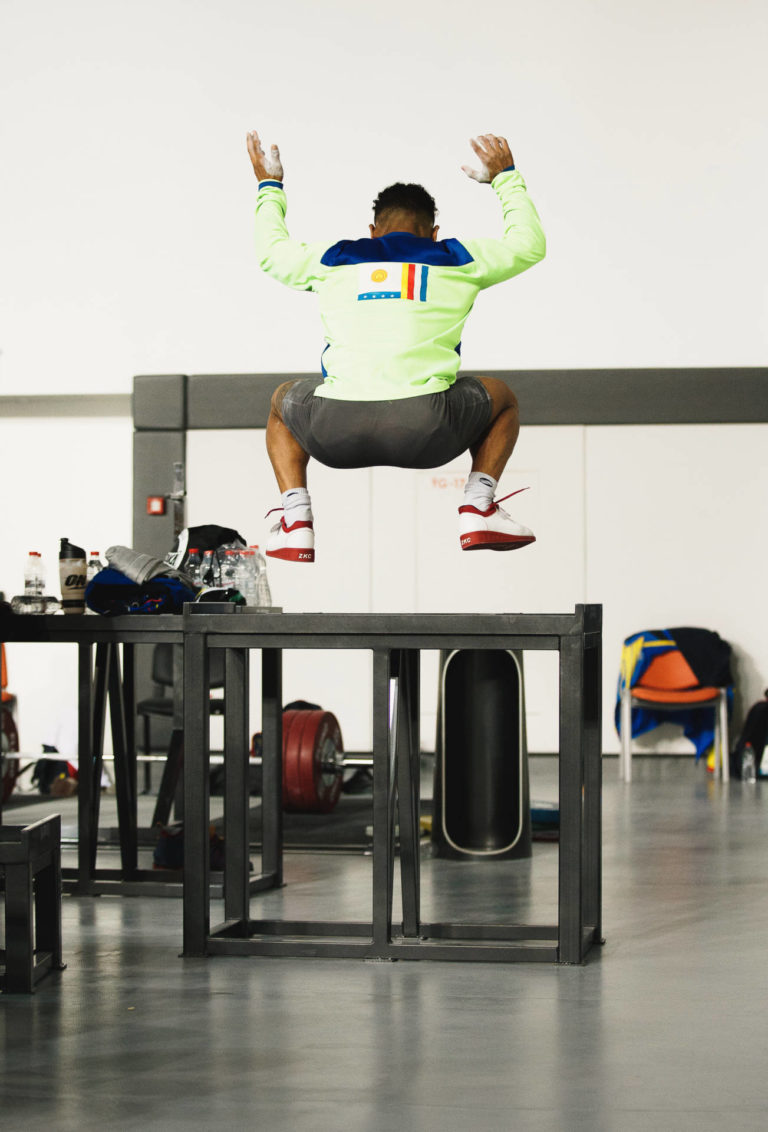Strength Sensei Bookshelf
Secrets of Soviet Sports Fitness and Training
Insights into the early success of the Big Red Machine
“Talent Prevails!” is a slogan that many American coaches endorse. It’s why so many college programs spend considerable amounts of money and resources recruiting the best athletes. It’s also why so many successful sports teams can get away with having inferior strength and conditioning programs. Michael Yessis, Ph.D., offers a different approach.
InSecrets of Soviet Sports Fitness and Training(published in 1987), Yessis explains how Russian coaches use sport science research to improve athletic performance at all levels of talent. An analogy to East vs. West training would be the training scenes in the Rocky IVmovie. To prepare for his fight with Rocky Balboa, Ivan Vasilyevich Drago worked out in an advanced training facility where his workouts were monitored, measured, and guided by sport scientists. In contrast, Rocky trained in a barn using farm equipment and outside in the snow.

In addition to physical preparation, Yessis says the Soviets spent a considerable amount of time and resources to mentally prepare athletes. He says film libraries were maintained of elite athletes performing their best. Soviet athletes would study these films to help them visualize competing against the world’s best and imagine defeating them. How did Yessis know this?
Besides visiting Russia’s sports training facilities, Yessis was able to translate Soviet research that was published in journals, such as Theory and Practice of Physical Culture, and the research yearbooks published for each sport. His translations appeared in his publication, Soviet Sports Review. Translated yearbooks were hard to find; however, many weightlifting yearbooks were translated and published by Andrew “Bud” Charniga and made available through his company, Dynamic Fitness Equipment.
Writing for a general audience, Yessis says one advantage Soviet athletes had over their competitors was how they planned their workouts using the concept of periodization. This concept is discussed in detail in Chapter 4, which he titled “The Newest Training Innovations: How They Can Help You.”
Periodization can be thought of as fatigue management. Because athletes cannot work on all phases of physical preparation at the highest levels simultaneously, their training was structured into phases. For example, one phase would focus on strength, another on power, and another on muscular endurance.

Yessis says the Soviets break down the year into four phases: general preparatory, specialized preparatory, competitive, and transitional. These phases are further broken down into weekly phases. Likewise, Coach Charles Poliquin used a program design system in his weight training workouts in which he would alternate between periods of high volume (accumulation) and high intensity (intensification).
Regarding specific training methods, plyometrics is covered in Chapter 5, “Speed-Strength Training: A New Soviet Breakthrough.” Plyometrics are special exercises performed at high speeds to enable athletes to jump higher, run faster, and become more powerful overall.
Much of the pioneering work on speed-strength training is attributed to Russian sports scientist Yuri Verkhoshansky. A track and field coach, Verkhoshansky is considered the “Father of Plyometrics” for his work in developing special jump exercises to improve athletic performance. Through his writings, translations, and coaching presentations, Yessis should be credited for helping to introduce depth jumps and other forms of plyometric training to the US.
Recovery is a major theme in Russian athletics. Yessis devotes several chapters discussing massage, nutrition, and restoration methods that enable their athletes to improve their ability to recover from high volume and high-intensity workouts. For example, in Chapter 9, “Making the Most of Soviet Restorative Measures,” Yessis provides illustrations and detailed descriptions on how to perform self-massage.
Throughout the Secrets of Soviet Sports Fitness and Training, Yessis gives examples of special exercises designed to achieve athletic performance. Many of these exercises require no special equipment, while others use simple tools such as kettlebells and medicine balls. He also stresses the importance of having young athletes use challenging exercises to develop a general conditioning base that will enable them to perform more specialized exercises when they are physically mature.
Since the publication of Yessis’s book, other experts on Russian training methods have written detailed textbooks. These writers include Mel Siff, Ph.D., (who coauthored Supertraining with Verkhoshansky), hammer throwing coach and Olympic champion Anatoliy Bondachuk, Ph.D., Vladimir M. Zatsiorsky, Ph.D., Pavel Tsatsouline, and Charniga (who focused on weightlifting articles but also the works of Verkhoshansky).
Yessis did an excellent job of promoting a science-based approach to training with the Secrets of Soviet Sports Fitness and Training. It’s an easy read and is a book that inspired many coaches to take their training to the next level by carefully planning their workouts and measuring the progress of their athletes to determine where changes need to be made. The book is not the ultimate resource for how to train like a Russian, but it’s a good start!
[You can purchase Dr. Michael Yessis’s Secrets of Soviet Sports Fitness and Training through Amazon.com.)
